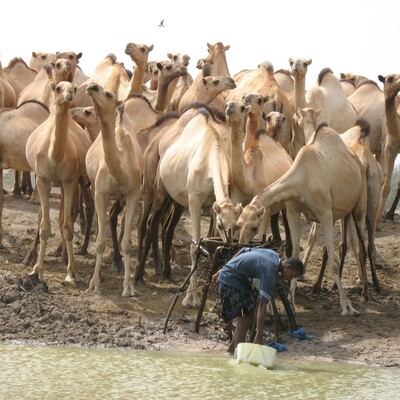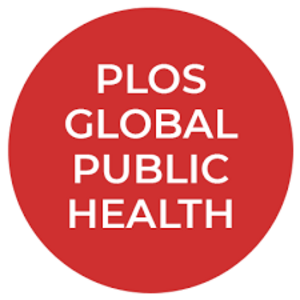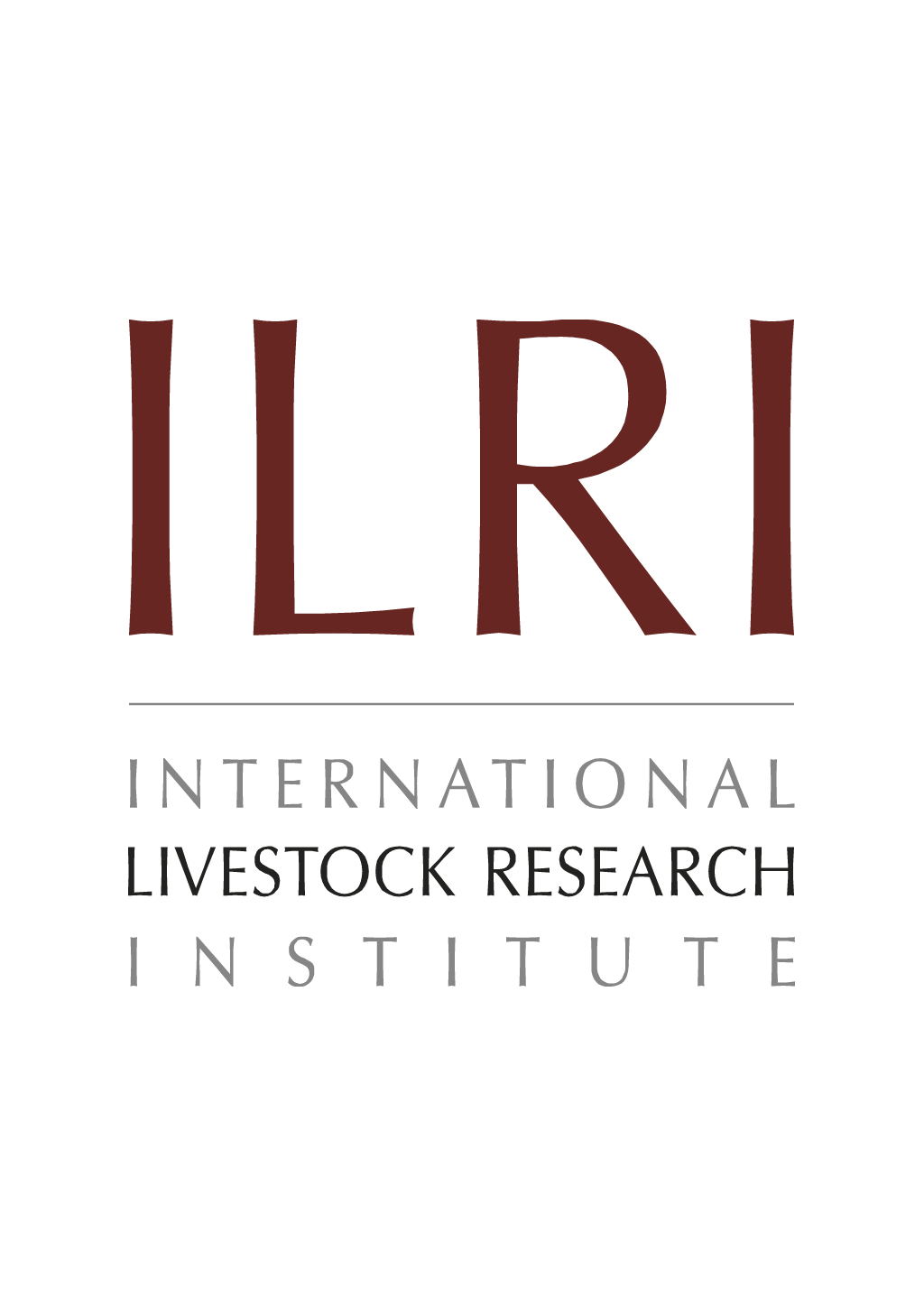
After 10 years in Kenya and Ethiopia, are we ready to scale up livestock insurance in the Horn of Africa?
Index-Based Livestock Insurance (IBLI) programs in East Africa have thus far had limited success. A new ILRI study finds that future initiatives should embrace a number of lessons learned if they wish to achieve scale and financial sustainability.
It’s not a secret – for millions of people, droughts in the Horn of Africa are an existential problem.
Pastoralists tend to be the worst affected. They herd livestock in the semi-arid drylands that comprise much of the Horn of Africa. Pastoralists account for approximately 20 percent of the population in the eight countries of the Intergovernmental Authority on Development (IGAD), or some 50 million people. Every 4 years or so, they experience too little rainfall for the growth of the pasture they need to feed their livestock. Animals die of starvation and become vulnerable to diseases or need to be sold at low prices – a disaster for many pastoralists, for whom livestock are both their only source of income and savings.
'Drought is a huge recurring problem for many pastoralists,' says Francesco Fava, assistant professor at the University of Milan and former Team Lead of the Index-Based Livestock Insurance (IBLI) program at the International Livestock Research Institute (ILRI). 'For example, our studies show that in northern Kenya, drought-related starvation is the leading cause of livestock deaths – more than 50 percent of animals die this way.'
Indeed, following the severe droughts of 2008 to 2011, the total cost of livestock deaths in the region ran into billions of US dollars, and many pastoralists lost their herds and primary source of livelihood.
What can be done to protect pastoralists better?
Since 2010, Kenya and Ethiopia have both invested in livestock insurance schemes for this purpose. In case the rains fail, they provide immediate emergency payouts to pastoralists to enable them to keep their breeding livestock alive. This is in contrast with conventional disaster relief and humanitarian assistance programs where emergency assistance can take up to 6 to 9 months to mobilize and reach the intended beneficiaries.
What have we learned from these schemes? And is it worth bringing the Kenyan and Ethiopian experience to scale?
Two types of drought insurance schemes for pastoralists have been implemented. Both use satellite data to detect droughts quickly and are thus referred to as 'index-based livestock insurance' (IBLI). However, there is a difference in the way the two types are structured:
- IBLI for individual households: In both Kenya and Ethiopia, pastoralists can purchase individual IBLI insurance from insurance companies and pay an annual premium. When satellites detect a drought in the insured pastoralist’s chosen location where he/she grazes her animals, he/she receives an emergency payment into his/her bank account. The amount is sized to help her buy fodder to keep the animals alive during the dry months. In 2019/2020, some 4,000 pastoralists decided to ensure themselves this way in Kenya, and 2,000 in Ethiopia.
- IBLI as a social protection scheme: Recognizing that many pastoralists were unable to afford insurance themselves, the Kenyan national Government and the Ethiopian Somali Region Government decided to step in. They purchase IBLI on behalf of large numbers of particularly vulnerable pastoralists. In case of a drought, the insured pastoralists receive a direct emergency payout. In 2019/20, 18,000 pastoralist household were supported in this way in Kenya through the “Kenya Livestock Insurance Program” and 7,800 in Ethiopia through the “Satellite Index Insurance Program for Ethiopia”.
So far, the results of these programs have been mixed.
First the good news: Since 2010, nearly 50,000 individual pastoralist IBLI policies were sold in Kenya and Ethiopia together. And since 2014, more than 100,000 pastoralist households were supported through the macro-level social protection type IBLI schemes. Following major droughts in 2011/12, 2014/15 and between 2016/17 and 2018/19, thousands of insured pastoralists received IBLI emergency payouts. Various scientific studies show the positive impacts the IBLI schemes have had on keeping animals alive and maintaining pastoralist livelihoods despite drought conditions. From a technical point of view, the IBLI product has now been tested and refined over 10 years and has been shown to respond well to drought-induced forage deficit in pastures .
In other words, many elements of the IBLI schemes do work and can indeed present a fast and reliable complement to traditional humanitarian assistance. Consequently, the approach is attracting interest from multiple countries beyond East Africa, which are currently piloting or assessing the feasibility of new schemes.
Now the not-so-good news: despite 10 years of implementation, the demand for and uptake of all IBLI schemes remains modest. In 2019, only about 33,000 pastoralist households—equivalent to some 200,000 people—were insured under all IBLI programs combined in Kenya and Ethiopia. This is low compared to the approximately 19 million pastoralists and agro-pastoralists living in both countries combined.
One challenge is limited demand. Many pastoralists are not familiar with the concept of paying premiums, which may or may not result in a drought-related payout. Many customers of the individual IBLI scheme choose insurance seemingly on a “test” basis—purchasing it for only one or two animals. Rates of disadoption are therefore high. For example, in Ethiopia, fewer than 10 percent of pastoralists who purchased IBLI cover in 2012/13 went on to renew their covers in 2013/14.
Besides, the IBLI business case for insurers is not clear. Three of the four IBLI programs have been operating at break-even or at a financial loss. The one that has not—the Ethiopian social protection type program—has only been active since 2018. In part, this may simply be due to bad luck—there was a particularly high incidence of droughts triggering insurance claims between 2016 and 2018.
However, there are also structural problems. Insurers from Ethiopia and Kenya complain that the operational costs for building distribution channels in remote pastoralist regions are far higher than the premiums they earn.
“IBLI insurers have found themselves in a very difficult position”, says Francesco Fava, “despite major investments over the last ten years, the distribution infrastructure on the ground remains weak”. Indeed, in Kenya, the only commercial insurer still active in the individual IBLI program decided to discontinue its participation in the program in 2020.
Can these challenges be overcome?
As our new study finds, there may be some hope.
First, there is a rationale to operate such programs not at a national but at regional scale. This could lower operational cost through shared infrastructure, create a larger market which may be more attractive to private insurers, yield greater risk diversification benefits, enable cross-country sharing of expertise, and contribute to building peace in remote pastoralist regions. IGAD countries who have convened on common approaches to livestock insurance time and again over the last few years, should thus consider working together, rather than in isolation.
Second, there are a number of practical lessons learned that designers of such programs should consider in the future:
- Don’t implement IBLI programs in isolation from each other. So far, there has been limited interaction between the various IBLI programs. This is regrettable, as for example social protection-type programs can incentivize beneficiaries to sign up to commercial IBLI solutions which are more sustainable in the long run. Awareness creation and financial literacy campaigns for potential policyholders can also be implemented together.
- Pursue new IBLI distribution channels, including meso-level. So far, micro-level IBLI distribution has failed to reach scale. New programs should be open about alternative approaches, e.g. meso-level sales to pastoralist cooperatives, livestock input dealers, milk processors etc.
- Parallel investments in livestock input and output markets. To be effective, IBLI needs a series of elements to be in place. For example, markets for fodder and feed supplements need to be available - without these, pastoralists receiving a payout are unable to use it to support their animals. In many remote pastoral areas, markets require strengthening.
- Follow a cluster approach: Given the challenges of implementing IBLI in the Horn of Africa region, a future regional IBLI program might initially focus on selected regions where livestock input and output services are more developed. This could e.g. be in “clusters” that have been identified by IGAD.
- Invest in beneficiary registries: For any social protection type IBLI program, one key challenge is to identify the most vulnerable pastoralists. There are only few suitable household registries in use in the Horn of Africa region - policymakers could thus consider investing in the development of pastoralist household registries. One successful example is the Hunger Safety Net Program in Kenya.
- Align with other pastoral development initiatives: Across the Horn of Africa, policymakers pursue pastoral development initiatives. For maximum impact, these should be planned together and aligned with IBLI schemes. For example, financial literacy campaigns, targeting and registration systems are needed for many types of programs and could also benefit IBLI schemes. Planning together will also avoid problems such as double-targeting.
- Set-up a learning agenda around the program: Robust mechanisms need to be in place to monitor the operational functioning of the program, to evaluate the quality of the proposed technical solutions, and to assess costs and benefits at institutional and community levels. Lessons learned from impact studies and product design evaluation have been paramount for improving IBLI solutions and build trust on their value, while unexpected and less documented failures in the implementation chain (e.g. payout delivery) have serious negative impacts.
Livestock insurance in the Horn of Africa is at a pivotal moment, with a wealth of experience to learn from, evidence-based recommendations to take it to scale and appetite by regional and global partners ready to take on the challenge. While it is not the only thing that can build resilience of pastoralists in the region, it is certainly a step in the right direction.
--
Felix Lung is the lead author of the full set of DIRISHA reports that will be published in September 2021. The DIRISHA project was launched in July 2020 and closed in May 2021. It is supported by the Foreign, Commonwealth & Development Office (FCDO) of the United Kingdom in close coordination with Centre for Disaster Protection (CDP) and the African Development Bank (AfDB).
Banner photo: A livestock herder with his herd of goats in Afar, in northeastern Ethiopia. Rupsha Banerjee/ILRI



















